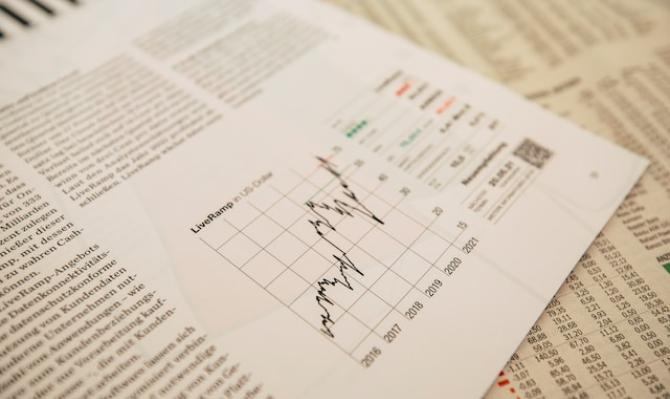Monetary policy has done (all?) the homework
We analyse what has happened in advanced economies in terms of inflation and interest rates in order to try and gauge the likely course the central banks will take over the coming months.

Over the past two years, inflation and interest rates have transcended the realm of specialist economic debate to become a general topic of conversation in society. An example of this is the number of Google searches for the terms «inflation» and «interest rates», which reached an all-time peak in June 2022 and March 2023, respectively. Indeed, it is no coincidence that they follow this sequence, as central banks have raised interest rates in response to the inflation rally. In this article, we will try to set out what has happened in advanced economies in terms of inflation and interest rates, with the perspective provided by time, before speculating as to the likely course they will take over the coming months.

The inflationary episode which began in 2021 has been global in nature, and while there have been some idiosyncratic nuances, we have seen common elements among the main advanced economies. Firstly, the end of the lockdowns to prevent the spread of COVID had two effects on inflation: on the one hand, households had accumulated savings which led to an increase in demand for goods and services when the restrictions were lifted. On the other hand, a change in consumption patterns was observed with a bias towards durable goods. Combined with the impact of the pandemic on global supply value chains, this caused bottlenecks and put pressure on prices (e.g. through an increase in the price of containers on shipping routes). Secondly, the outbreak of the war in Ukraine caused a spike in food, gas and oil prices, all of which are key products both at the beginning of the price formation chain and in the basket of final consumption goods. Thirdly, these dynamics were also transferred to other global commodities, such as industrial materials. A fourth and final common element has been the strength of labour markets: the unemployment rate has reached a 54-year low in the US and all-time lows in the euro area. This has allowed wages to rise, limiting somewhat the loss of purchasing power but also leading to higher costs for companies, although this has had only a moderate impact on consumer prices.
In this context, and in order to keep inflation expectations well anchored, central banks began to raise interest rates, some earlier than others (in October 2021 in New Zealand and in July 2022 in the case of the euro area).1 Indeed, all of them except the Bank of Japan have taken monetary policy clearly into restrictive territory in an attempt to curb inflation, cool down the labour market and, in some cases, control the exuberance of the real estate markets.2
By the end of 2022, many central banks appeared to be approaching the ceiling of the interest rates rises and had begun adjusting the speed at which they wanted to reach it. For instance, the Fed and ECB stopped raising interest rates by 75 or 50 bps in favour of implementing 25-bp rate hikes, while in the case of the Fed it even stopped raising rates at some meetings, as we saw last June. In addition, and as the fourth chart shows, what we have witnessed in 2023 up until June has been broadly in line with analysts’ and investors’ expectations (the gap between the orange dot and the grey bar is small in almost all regions).
In recent months, we have seen a moderation of the main causes of the current high inflation, also visible in the second chart. On the one hand, energy prices, shipping container costs and the price of various materials have normalised, and even food prices are showing signs of moderation. On the other hand, the excess savings are starting to run out. In the US, the latest estimates by the San Francisco Fed suggest that only around 500 billion dollars of savings remain (2.1% of GDP), and they are not necessarily evenly distributed among different types of households.3 Finally, although the rate of moderation varies across different components, disinflationary signals are beginning to emerge throughout the basket of consumer goods.4
- 3. H. Abdelrahman and L.E. Oliveira (2023). «The Rise and Fall of Pandemic Excess Savings». Economic Letter. Federal Reserve Bank of San Francisco.
- 4. See the Focus «European inflation: beginning of the end or end of the beginning?» in this same report for further details on these disinflationary pressures, with an emphasis on the euro area.

In this context of a moderation of inflation but resilient economic growth and labour markets, central banks are still aggressive in their rhetoric: they do not want to declare the fight against inflation over too soon. It is well known that monetary policy affects economic activity with a certain time lag, and even more so in the case of inflation. Therefore, calibrating exactly what interest rate level is needed today in order to cool down the economy by just the right amount to drive down inflation is a very difficult task. There is too much uncertainty to know what interest rate level is needed in order to bring inflation back down to the 2% target without causing too much of a slowdown. However, in the face of these considerations, central banks are finding resistance in the economic indicators, which invites them to continue raising interest rates. Faced with this dilemma, the new monetary policy strategy seems to involve further rate hikes, albeit limited to only a few and at a gradual pace, as expected by the financial markets (hence the small gap between the orange dot and the blue dot in each region in the fourth chart).


All in all, we believe that the upward path in official central bank interest rates still has some way to go, and both the Fed and the ECB are highly likely to raise rates again this July, although the end of the rate hike cycle should be close.
That said, beyond going into the details of whether the Fed or the ECB will raise rates by a further 25 or 50 bps, what does seem quite clear from the central banks’ tone is that the restrictive interest rate environment will remain in place for some time to come. In other words, even if the Federal Reserve were to not raise interest rates any further (and even if it began to cut them gradually in Q4), rates would remain at restrictive levels for much of 2024. To illustrate this, our forecasts anticipate that the interest rates of the Federal Reserve (upper target range) and of the ECB (depo rate) will stand at 3.50% and 3.00% at the end of 2024, respectively. This stance involving a sustained restrictive monetary policy, which moreover is supported by the reduction of the central banks’ balance sheets, should be sufficient to moderate economic growth, cool down the labour markets and end up bringing inflation down to the 2% target. This is particularly the case when we consider the evidence that there is a time lag for the macroeconomic effects of monetary policy to materialise (it should be borne in mind that the tightening of monetary policy implemented last year was particularly agressive) and the fact that various intermediate-phase indicators (such as credit conditions) show that the transmission of monetary policy is working.
- 1. In emerging economies, the rate hikes began somewhat earlier than in advanced economies and have been, in general, more aggressive.
- 2. See the Focus «Advanced economy housing markets in a scenario of tighter monetary policy (part I)» in the MR04/2023.
- 3. H. Abdelrahman and L.E. Oliveira (2023). «The Rise and Fall of Pandemic Excess Savings». Economic Letter. Federal Reserve Bank of San Francisco.
- 4. See the Focus «European inflation: beginning of the end or end of the beginning?» in this same report for further details on these disinflationary pressures, with an emphasis on the euro area.




